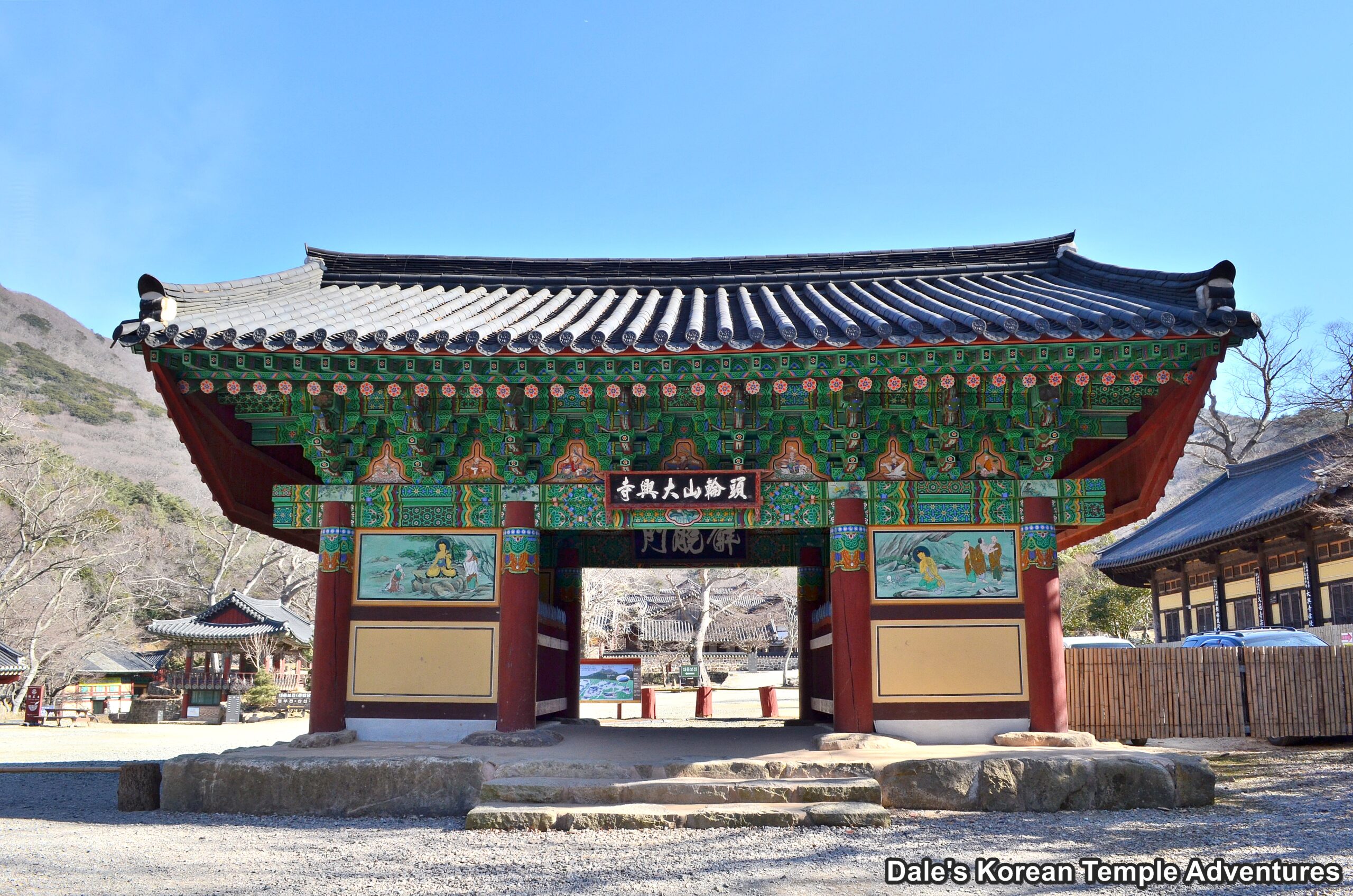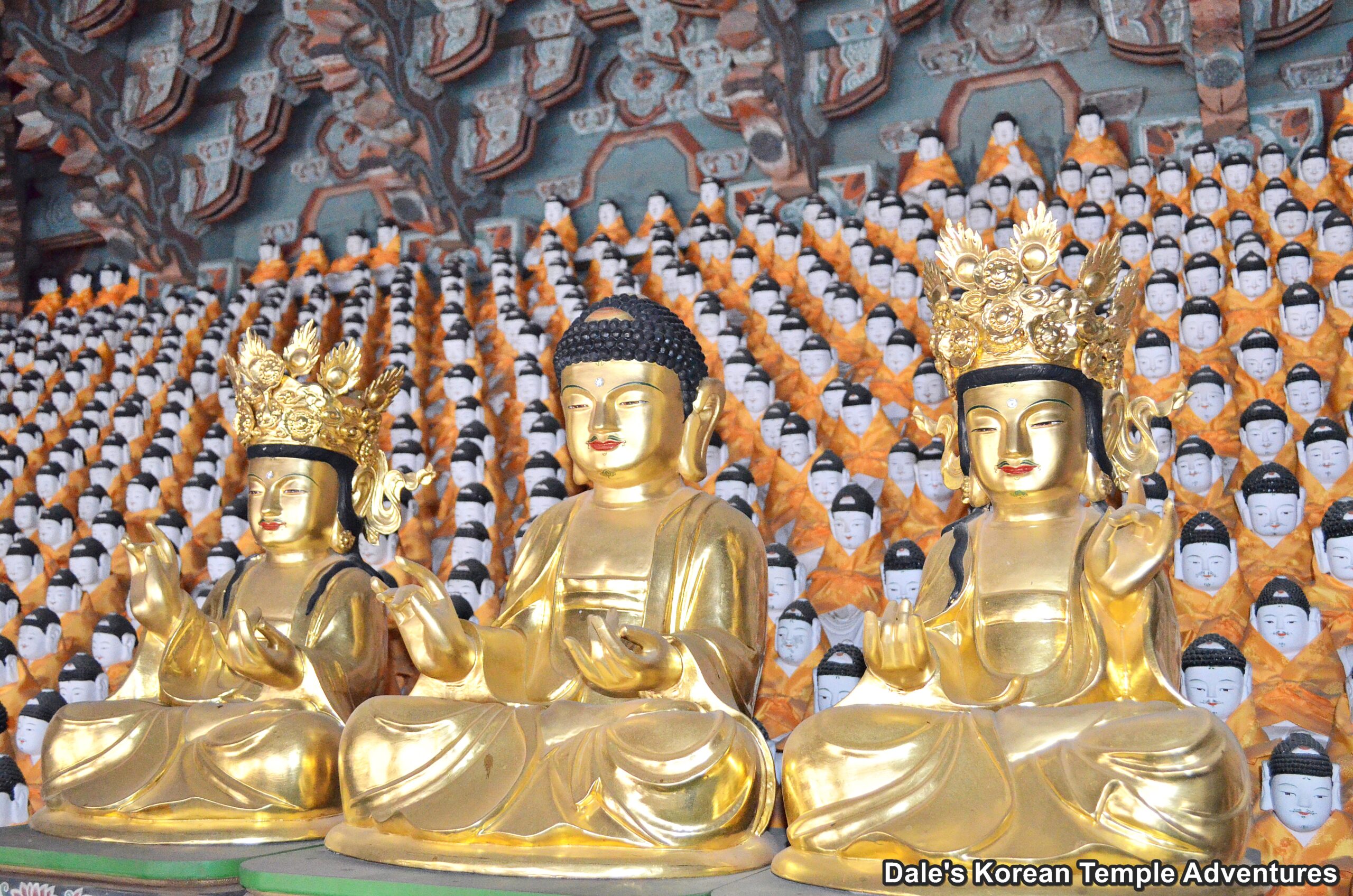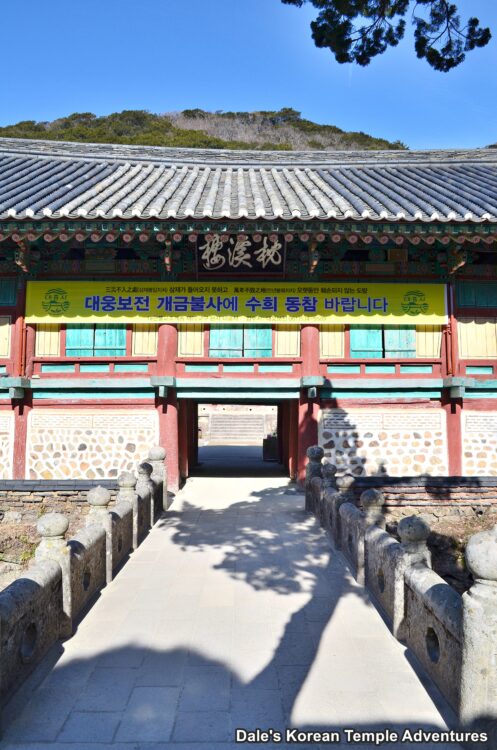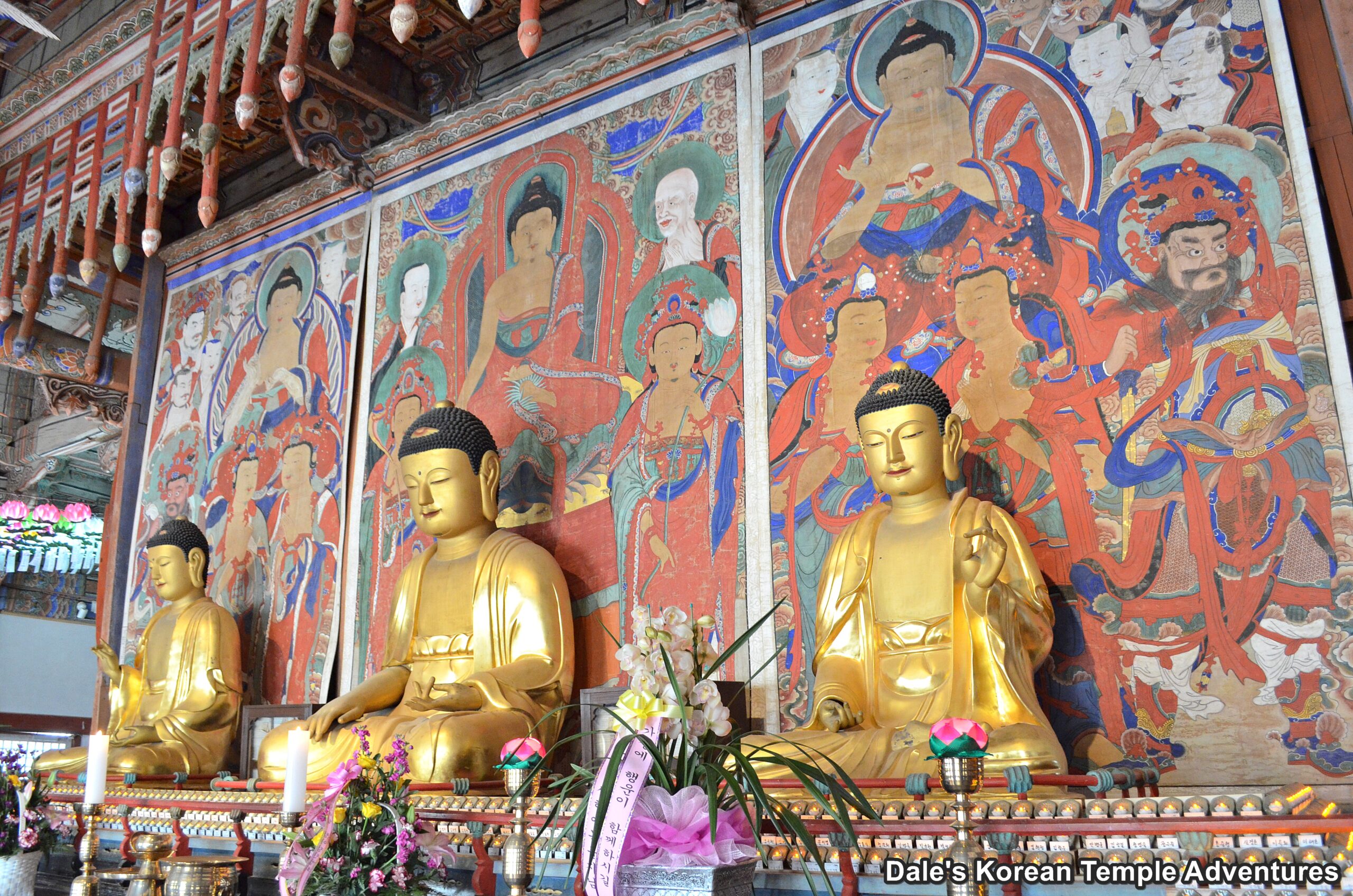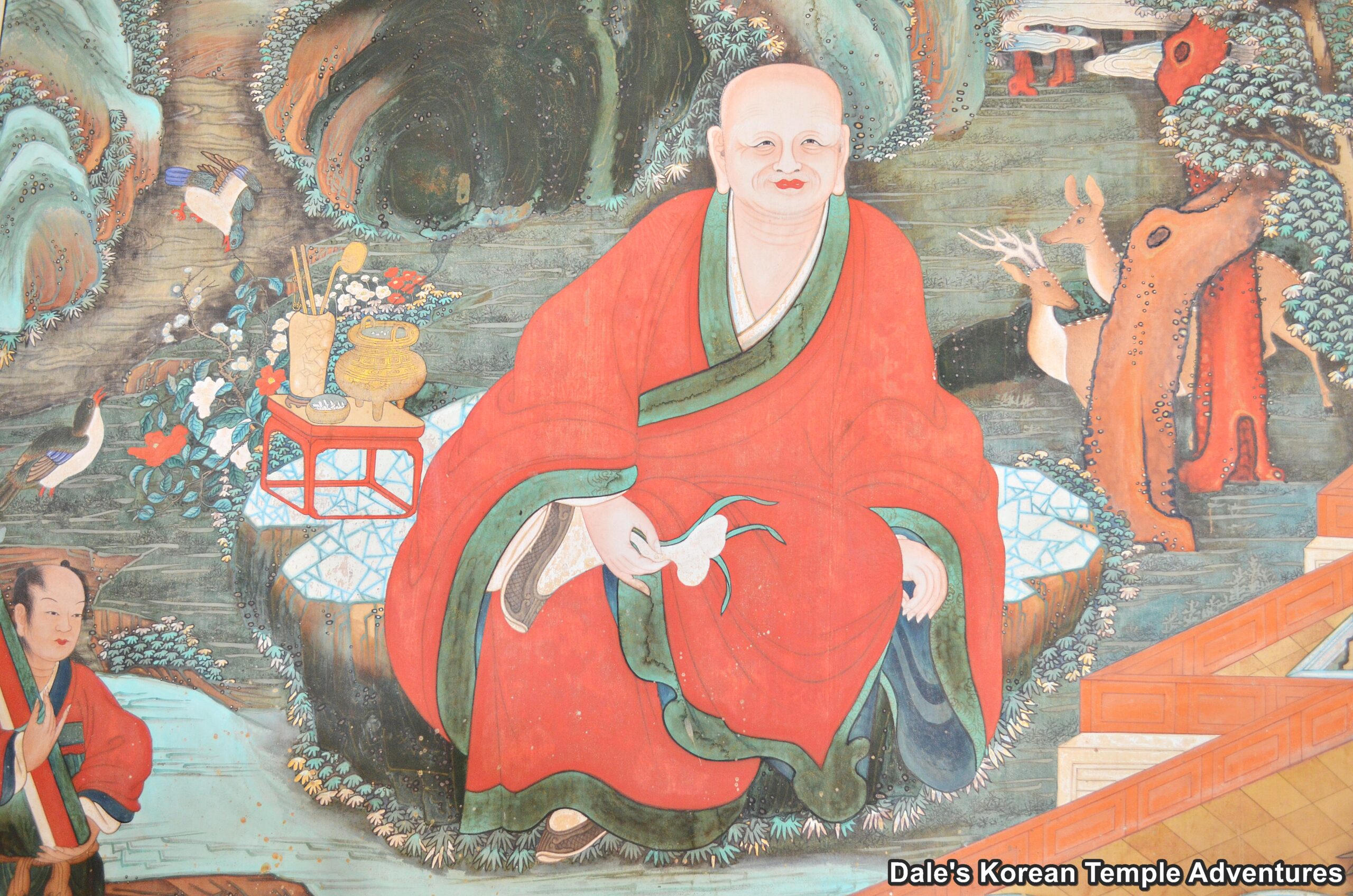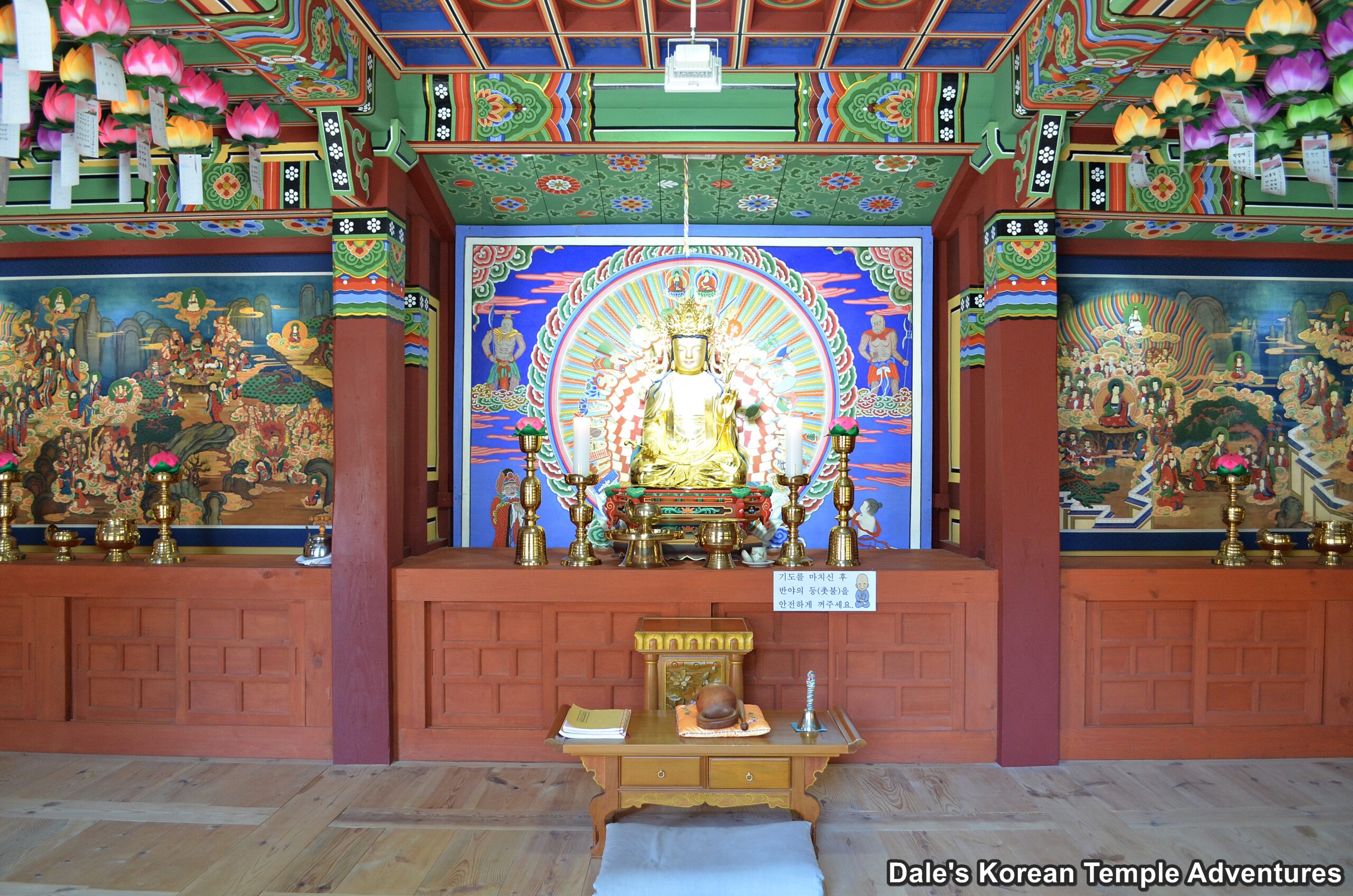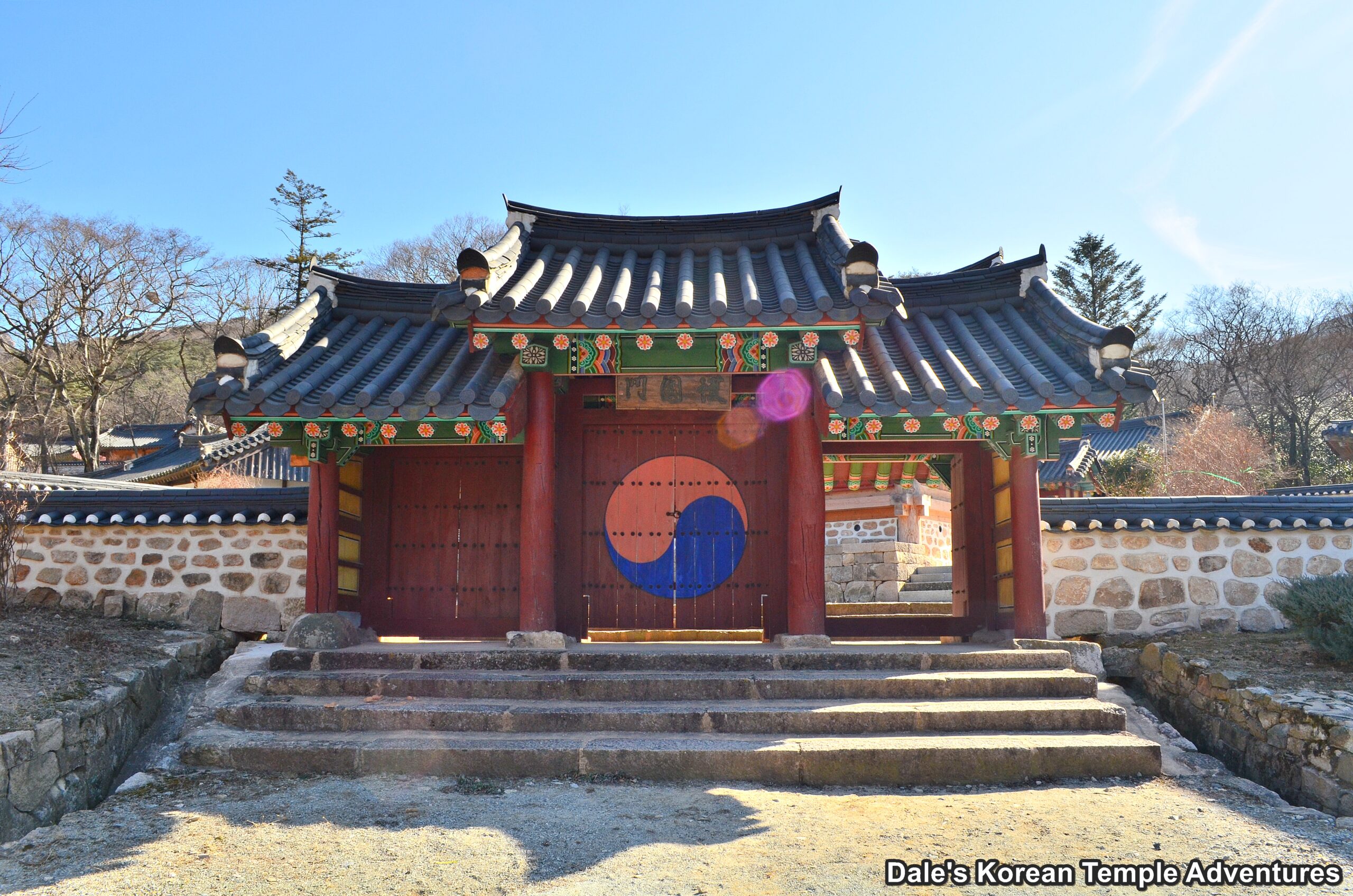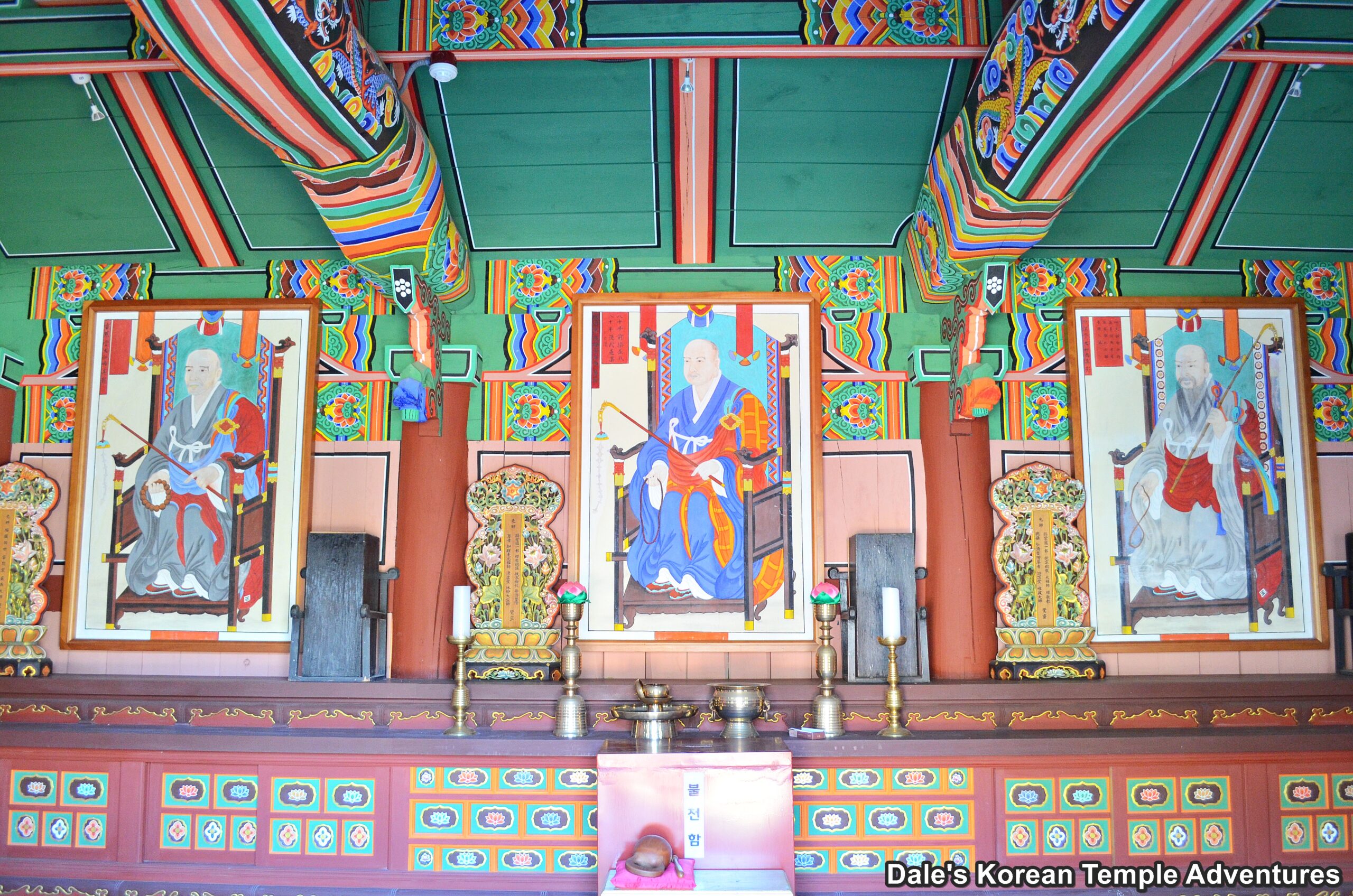Daeheungsa Temple – 대흥사 (Haenam, Jeollanam-do)

Temple History
Daeheungsa Temple, which means “Great Emerging Temple,” in English, is located in Duryunsan Provincial Park on Mt. Duryunsan (700m), which means “Head Wheel Mountain,” in English. The temple is located in the city of Haenam, Jeollanam-do. Because the name of the mountain that Daeheungsa Temple is located on has also been called Mt. Daedunsan (673.4m), the name of the temple has alternated between Daedunsa Temple and Daeheungsa Temple. In 1993, the name of the temple, changed once more, from Daeheungsa Temple back to Daedunsa Temple. Finally, in 2003, it was changed to Daeheungsa Temple, perhaps for good? Throughout the years, the name of the mountain that hosts Daeheungsa Temple has also undergone numerous name changes. At one point, the mountain was called Mt. Handeum, which means “large,” and “round,” in English. As a result, the name of the temple also used to be Handeumsa Temple for a long period of time. Afterwards, the name of the temple changed to Daedeumsa. “Dae” being the Hanja (Sino-Korean) character for “large,” replacing the former use of “Han.” Afterwards, the name of the temple changed to Daedunsa Temple.
As for when the temple was first built, and by whom, there are three competing theories as to how it was first built. Depending on the records one is using, whether it’s the Jungmigi, Maniramgogi, and Bugamgi, you’ll get a different answer as to when and how the temple was first built. The first theory states that Daeheungsa Temple was first founded in 426 A.D. by the monk Jeongwan, a Silla monk, based on the Maniramgogi records. He called the temple Maniram Hermitage. The Jungmigi records, on the other hand, state that the Ado-hwasang founded the temple in 514 A.D. And the final record, states that Doseon-guksa (827-898 A.D.) founded the temple in 875 A.D.
However, and according to the Daedunsa-ji, which was issued in 1823, there’s no basis for the claims made by these three aforementioned records. For one, Ado-hwasang wasn’t active in this part of Korea at this time. Another is the age of Doseon-guksa at this time. However, by looking at the artifacts as Daeheungsa Temple, we gain a better understanding of when the temple was first built. One of the greatest artifacts that point to the year of Daeheungsa Temple’s creation is the three story stone pagoda that dates back to Later Silla (668-935 A.D.) which stands in front of the Eungjin-jeon Hall. Also, there used to be stupas at Daeheungsa Temple that enshrined the sari of three monks: Sinam, Chongeun, and Seongyu. While these stupas no longer exist, these monks lived during the Goryeo Dynasty (918-1392). So based upon these two facts, it’s believed that Daeheungsa Temple was first founded at the earliest during Later Silla, and at its latest during the Goryeo Dynasty.
With all that being said, Daeheungsa Temple was a little known temple during the Goryeo Dynasty. It wasn’t until the mid-Joseon Dynasty (1392-1910) that Daeheungsa Temple grew in prominence. This was done through the contribution of the warrior monk, Seosan-daesa (1520-1604). At the age of seventy-three, Seosan-daesa recruited 5,000 monks called the Righteous Army to help repel the invading Japanese during the Imjin War (1592-1598). These warrior monks were integral in ousting the invading Japanese from the Korean peninsula. After the Imjin War, Seosan-daesa requested that his alms bowl and robe be housed at Daeheungsa Temple. The reason that Seosan-daesa wanted these two personal items placed at Daeheungsa Temple after his passing is that he believed that the temple would never be destroyed by the samjae, or three disasters (floods, fire, and wind). Both the alms bowl and robe were given to Daeheungsa Temple in 1604. It was after all this took place that Daeheungsa Temple finally grew in stature both in the Buddhist community and from the royal court. In total, Daeheungsa Temple has produced thirteen great patriarchs (Daejongsa), one of whom, Choui-seonsa (1786-1856), helped allow the temple to become well-known as a centre for Korean tea culture.
In total, Daeheungsa Temple is home to one National Treasure at the neighbouring Bungmireugam Hermitage, eight Korean Treasures, one Historic Site, and one Scenic Site. Also, alongside six other Korean Buddhist temples, Daeheungsa Temple became a UNESCO World Heritage Site.
Temple Layout
You first approach Daeheungsa Temple up a long and beautiful pathway from the Duryunsan Provincial Park entrance. After arriving at the temple grounds, and crossing over the granite bridge, the very first thing to greet you at Daeheungsa Temple is the Haetalmun Gate, which means “The Gate of Deliverance,” in English.
Emerging on the other side of the Haetalmun Gate, which, rather surprisingly, is the only entry gate at Daeheungsa Temple, you’ll notice that the temple is separated into four distinct areas that house shrine halls. Straight ahead is the Cheonbul-jeon Hall part of the temple. Having passed through the Gaheo-ru Pavilion, you’ll notice the Cheonbul-jeon Hall, or “Hall of One Thousand Buddhas Hall,” in English, in front of you. The exterior walls to this hall are adorned with beautiful Shimu-do, or “Ox-Herding Murals,” in English. As for the interior, and resting on the main altar, is a triad of statues centred by Seokgamoni-bul (The Historical Buddha). This triad is joined by one thousand white stone sculptures of the Buddha. Each Buddha is sporting a yellow cape, and it makes for quite the sight. The Cheonbul-jeon Hall at Daeheungsa Temple is Korean Treasure #1807.
Now, if you decide to hang a left from the Haetalmun Gate, you’ll find yourself passing by the slightly elevated Beomjong-gak (bell pavilion). Still heading in this direction, and across another granite bridge and through the Chimgye-ru Pavilion, you’ll finally arrive at the temple’s main hall: the Daeungbo-jeon Hall. The Daeungbo-jeon Hall was first built in 1667, but it was later destroyed by fire. The present Daeungbo-jeon Hall dates back to 1899, when it was rebuilt. The exterior walls to this hall are adorned with Palsang-do (The Eight Scenes from the Buddha’s Life Murals). As for the interior, you’ll find a triad of statues on the main altar. In the centre sits Seokgamoni-bul (The Historical Buddha). This statue is joined on either side by Yaksayeorae-bul (The Medicine Buddha, and the Buddha of the Eastern Paradise) and Amita-bul (The Buddha of the Western Paradise). This triad is meant to represent Samsara. Also, these statues date back to 1612, and they’re Korean Treasure #1863. On the far left wall of the Daeungbo-jeon Hall hangs a handful of paintings like a mural dedicated to Chilseong (The Seven Stars) and a Shinjung Taenghwa (Guardian Mural).
To the left of the main hall is the Myeongbu-jeon Hall. This hall houses Jijang-bosal (The Bodhisattva of the Afterlife). And to the right of the Daeungbo-jeon Hall is perhaps the most unique shrine hall at Daeheungsa Temple. This shrine hall is the dual purpose shrine hall. This shrine hall is divided into two parts. The left side of the shrine hall is the Eungjin-jeon Hall. Housed inside this hall are sixteen Nahan (The Historical Disciples of the Buddha). Uniquely, there’s no statue of the Buddha inside. And through a narrow wooden entrance to the far right, you’ll be able to enter the Sanshin/Dokseong-gak. Both murals are some of the finest of these two shaman deities that you’ll find in all of Korea. And to the right of this dual purpose shrine hall, you’ll find a 4.3 metre tall three-story pagoda that dates back to all the way to Later Silla (668-935 A.D.). This is the pagoda that helped to date the origins of the temple at the start of this article. The stone pagoda is also Korean Treasure #320.
Now, to the right of the Haetalmun Gate, and back at the temple entry, you’ll find a small collection of temple shrine halls on your way to the Pyochungsa shrine hall. To the right of a beautiful pond and garden, you’ll find the Gwaneum-jeon Hall. Under an angelic light sits Gwanseeum-bosal (The Bodhisattva of Compassion) all alone on the main altar. Continuing to the right, you’ll come to the Pyochungsa shrine hall. Housed inside this hall are three murals. The first in the set is dedicated to Seosan-daesa, while the other two murals are dedicated to the monks Samyeong-daesa (1544-1610) and Choyeong. This hall dates back to 1788. Next to this hall, and to the right, is a biseok (stele) dedicated to Seosan-daesa. The other building in this area is the Josa-jeon Hall, which is to the left of the Pyochungsa shrine, and it’s dedicated to prominent monks that once called Daeheungsa Temple home.
The final shrine hall that can be visited at Daeheungsa Temple is to the north of the Pyochungsa shrine hall area. This shrine hall is the Daegwangmyeong-jeon Hall. Inside this hall is housed Birojana-bul (The Buddha of Cosmic Energy).
Admission to the temple is 3,000 won.
How To Get There
To get to Daeheungsa Temple, you’ll first need to get to the Haenam Intercity Bus Terminal. From the Haenam Intercity Bus Terminal, you can catch a bus that goes directly to Daeheungsa Temple. This bus may also be referred to as Daedunsa Temple. The bus that runs to the temple leaves every thirty minutes starting at 6:50 a.m., and it runs until 7:40 p.m. The bus ride should take about twenty minutes.
Overall Rating: 8/10
Daeheungsa Temple is another one of the Sansa UNESCO World Heritage Sites alongside six other temples like Buseoksa Temple and Beopjusa Temple. The temple is home to a wide variety of shrine halls like the highly unique Pyochungsa shrine hall, the Cheonbul-jeon Hall, the dual Eungjin-jeon and Sanshin/Dokseong-jeon Halls. Also, the artwork throughout, like the Dokseong (Lonely Saint) and Sanshin (The Mountain Spirit) murals are really second to none. Also, and if you have the opportunity, take a break and have some of the tea for which the temple is renowned.
